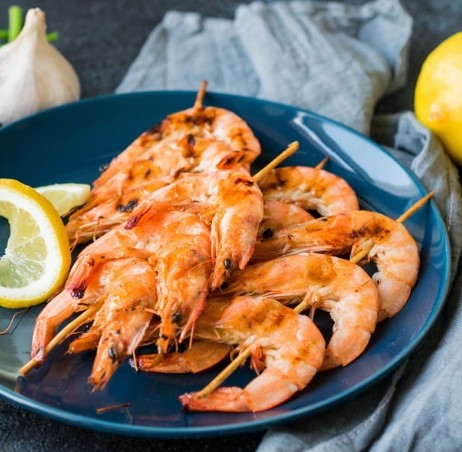Antibiotics in shrimp: what does this mean for us and for the environment?

Photo is illustrative in nature. From open sources.
Antibiotics in shrimp: what does this mean for us and for the environment?
Shrimp are one of the most popular seafood in the world. They contain many useful substances, such as proteins, fats, vitamins and minerals. However, like other animals, shrimp can get sick with various infections and diseases. Antibiotics are used to treat these diseases .
Antibiotics are medicines that are used to fight bacterial infections. They kill bacteria or prevent their growth and reproduction. However, the use of antibiotics can have negative consequences for the environment and for our health.
In shrimp farming, antibiotics are used to treat infections and prevent disease. However, if their use is not properly controlled, they can accumulate in shrimp and the environment. This can lead to the development of antibiotic resistance in bacteria, making future infections more difficult to treat.
In addition, antibiotics can adversely affect the environment. They can enter water and soil and cause pollution. This can affect the animal and plant life, as well as the health of people who consume shrimp and other seafood.
To avoid these problems, it is necessary to control the use of antibiotics in shrimp farming. Shrimps should receive only the required amount of antibiotics, and treatment should only be carried out under the supervision of a veterinarian. In addition, strict regulations must be developed for the disposal of shrimp waste in order to avoid environmental pollution.
In conclusion, antibiotics are an important tool for treating infections in shrimp. However, their use must be controlled to avoid negative consequences for the environment and human health. Strict regulations must be developed for shrimp farming and waste disposal to ensure the safety of our food and the environment.
Read together with it:
- My parents' behavior during quarantine made my husband angryWhen my whole family found themselves in self-isolation, I was somewhat happy. There was never enough time to rest,communication with children. And household chores have piled up.Once the shock of fear of the coronavirus had worn off a bit, we enjoyed doing nothing. But the idyll didn't last long, a...
- My husband reproaches me for being on maternity leaveMy husband openly reproaches me for being on maternity leave. The initiative to have a child was entirely his. He was initially looking for a woman to start a family, have children with, and he found me. Already in the first year of marriage he was worried that there were no children for a long time...
- I betrayed my friend and I don’t know how to make amendsBetrayed a close friend, one might even say a kindred spirit. Her name is Vika.We met in the 6th grade (I transferred to another school). At first I didn't really like her, and she didn't like me either, but gradually we got closer and by the 8th grade we were already getting along great, and by the...
- If your mother-in-law is an energy vampireI ask for advice and help in communicating with my motherhusband . She is a good person, she hasn't done anything bad to me. She has never offended me, she hasn't gossiped behind my back. But it is very difficult for me to communicate with her, as if she is sucking the strength out of me. She consta...
- Jealous guyI always wanted to have one like thisa guy who would keep me close to him, who would know everything about me, who would take care of me all the time. In general, I wanted my guy and I to have a complete unity of souls. Like twins. Or let there be a guy who will keep my "inadequate artistic" nature ...
- Now I know what happiness looks likeI was born into a large, poor family in a small provincial town. Parents alllife fought for survival. In the 90s this was the norm. Parents always believed that a person must have a higher education, and they tried in every possible way to give all their children the opportunity to study at a univer...
- My husband was disappointed in me and asked for a divorceI thought for a long time whether to write here or not, but suddenly my story will help someone. After readingconfession “I had an abortion and don’t regret it” and numerous comments to it, I want to write my story.Now I'm completely alone. Yes, I have a higher education in the specialty in which I ...

